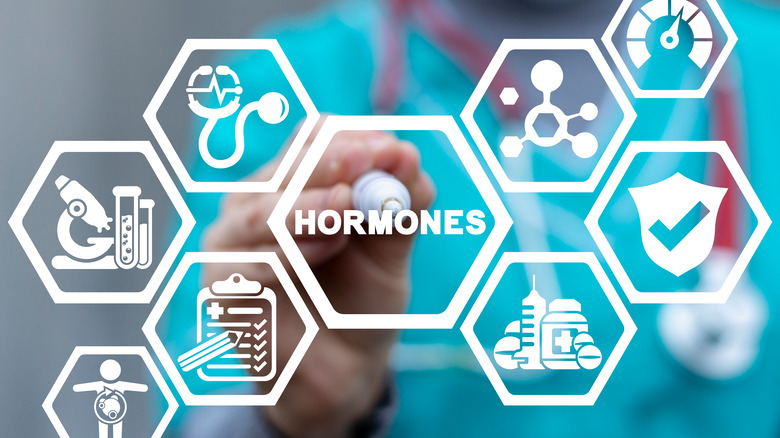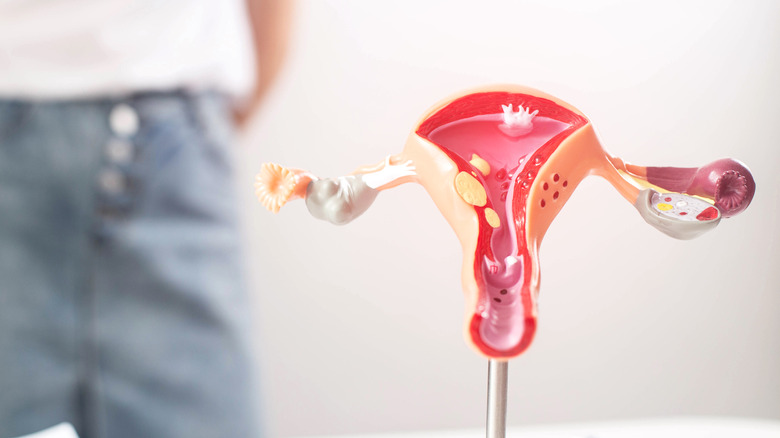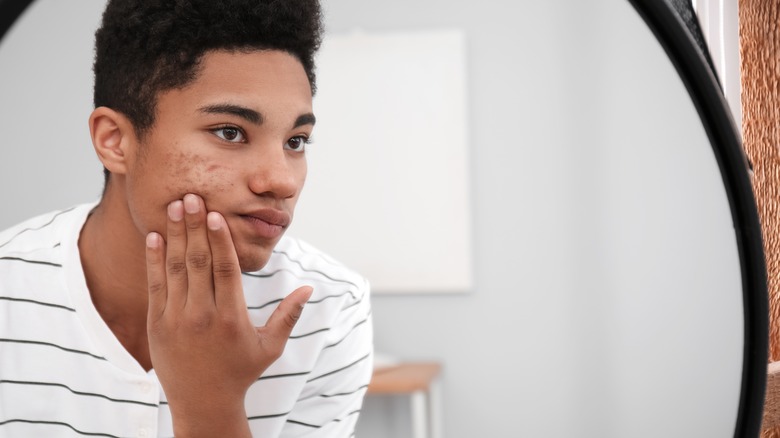What Are The Stages Of Puberty?
As a parent, knowing all the various milestones and stages your child is expected to move through can be helpful in understanding how to encourage and support them, while also keeping them safe and protected. Though there are a number of cognitive and psychosocial stages of development that children move through, one of the more difficult transitional periods for growing children and their parents is puberty.
It's common knowledge that puberty is a stage of physical growth and changes that occur in adolescence (the teenage years) that signal that the physical body is moving into adulthood. However, while there are a number of common side effects that occur, differences exist in how these changes are experienced based on biological sex, as explained by Healthline.
Though some basic information about puberty is common knowledge, there's a lot that happens in this critical developmental period. Bodily and hormonal changes combined with cognitive developments can create difficulties for children and their parents. Understanding how puberty progresses over time can help in navigating the ups and downs that are associated with the process.
Puberty is a period of time when there are many emotional, physical, and hormonal changes happening in the body and mind, according to Johns Hopkins All Children's Hospital. The process takes place in five stages.
The stages of puberty
The stages of puberty are classified as Tanner Stages, according to StatPearls. Each stage corresponds with specific changes in the development of secondary sex characteristics found on the body. The first stage of puberty can begin for each individual at a different age, based on factors such as biological sex, genetics, and ethnicity.
For females, puberty typically begins between ages 8 to 13. The average age for white females is 10 years old while for Black females, the average age is just under 9 years old (via StatPearls). Additionally, WebMD explains that for females, having a higher weight is also associated with an earlier onset of puberty. Most boys enter the first stage of puberty sometime between 9 and 14 years of age.
The first stage of puberty does not have any physically noticeable symptoms, according to Healthline. Tanner stage 1 is characterized by changes that are happening internally to prepare the body for physical transitions and developments. This stage is when the brain begins to send signals for new hormone production which will aid in the development of secondary sex characteristics.
The second stage
The second stage of puberty is where differences between sexes can begin to be seen. However, while some effects are physical, many of the changes occurring are still not noticeable to others. The second stage of puberty is typically entered at around age 11 for boys and between ages 9 and 11 for girls, notes Healthline.
Shared effects of this stage between boys and girls include the appearance of downy pubic hair (via StatPearls). This downy hair is pigmented, but is typically straight or only slightly curved (via Vermont Department of Health).
For females, this stage is marked by the eruption of buds, or the first signs of breasts. These buds are often small round mounds that begin to appear behind the areola. Some girls may experience tenderness, soreness, and itching as the tissue grows, according to Healthline.
Additional effects of this stage for girls can include the areolae (the pigmented skin around the nipples) and the uterus beginning to enlarge. For males, physical changes in the testicles and scrotum are occurring as the testicles are beginning to grow larger, notes Healthline.
Stage three
Stage three begins for girls around 12 years old and around 13 for boys. This stage is where the effects of puberty become substantially noticeable in both boys and girls. The individual differences in experiences begin to become significantly wider during the third stage.
Healthline explains that it is during this third stage that body hair begins to be visible under the arms, while pubic hair continues to become thicker and curlier. Additionally, it is common for girls to begin developing acne on the face and sometimes the back. WebMD explains that acne is a product of the high hormone levels experienced during puberty.
The breast buds continue to grow and the hips and thighs begin to develop a thicker appearance due to stored fat. Girls will also have the largest growth spurt in regards to their height, according to Healthline.
Boys will experience physiological changes as the penis grows longer and the testicles become larger (via Healthline). Like girls, boys may also experience a swelling of the breast tissue behind the nipple, but in most cases, this swelling will subside overtime. Boys' voices may crack or break during speaking as the pitch deepens.
Muscle mass will become larger during this time as well. Healthline explains that for boys, this period can bring on nocturnal emissions (also known as "wet dreams") for some. Boys will also experience a growth in their height, averaging between 2 and 3.2 inches each year.
Stage Four
By stage four, puberty is in full effect for both boys and girls. This stage typically begins around age 13 for girls and age 14 for boys, according to Healthline.
During this time, most girls will begin their periods, though it is not uncommon for some girls to have begun their first period during an earlier stage of puberty. Johns Hopkins All Children's Hospital states that for the first one to two years, menstruation may be light, heavy, or irregular. Pubic hair and breast tissue continue to develop.
For boys, the penis, testicles, and scrotum continue to grow while the scrotum also begins to darken. Voice changes that began during earlier stages will become permanent.
While girls are likely to begin showing signs of acne early on in puberty, it isn't until stage four that many boys begin to experience acne (via Healthline). It is also during this stage that many boys develop armpit hair.
The final stage
The fifth and final stage of puberty signals the end of the physiological and sexual transition from child to adult. For girls, this stage begins around age 15 and continues until around age 18.
Healthline explains that the menstrual cycle begins to regulate and should be regular between six months and two years after starting. The breasts will be fully developed and the hips, buttocks, and thighs have a more curvy shape (via Healthline). WebMD explains that most girls reach their adult height by their mid-teens.
For males, the fifth stage signifies that the penis, testicles, and scrotum have reached their adult size (via Healthline). Most boys will experience a decrease in their height growth and will be at their full adult height by age 18. While height growth may slow down, muscles can continue to grow. Facial hair may begin appearing with some males needing to shave.
While there are age ranges provided, there are cases in which individuals can experience early or late puberty. Medical News Today explains that early puberty is classified when a child starts puberty before eight years of age in girls, or nine years of age in boys. Similarly, late puberty occurs when girls have not begun developing breast buds by age 13 or started their period by age 16. For boys, late puberty is said to occur when the testicles have not begun to enlarge by age 14.






